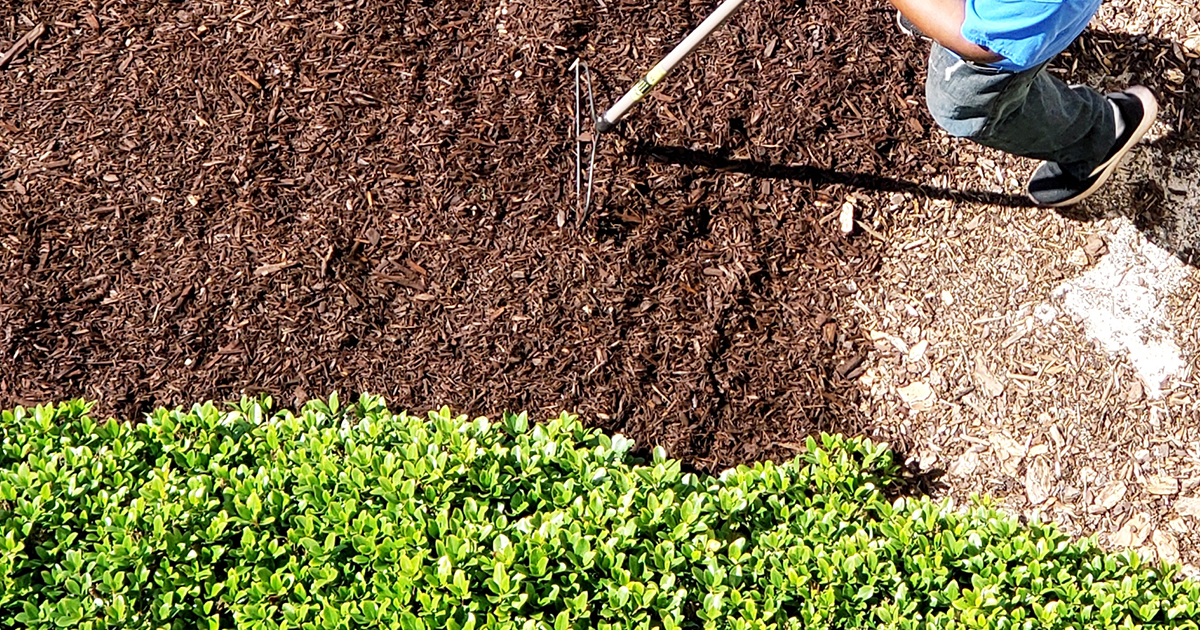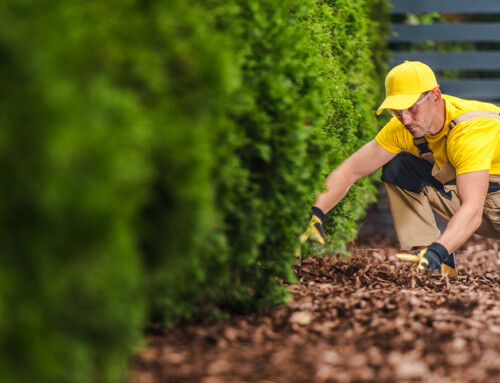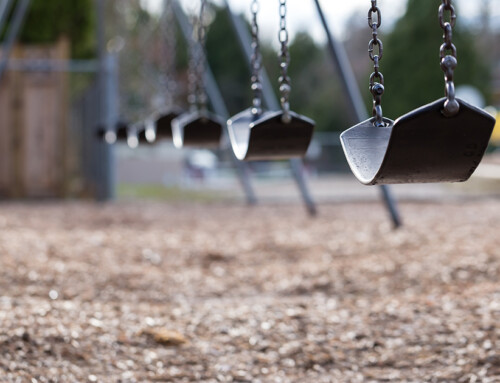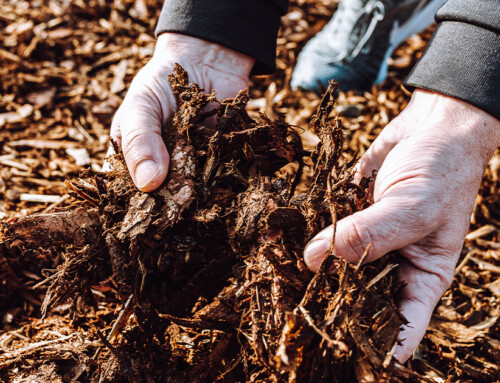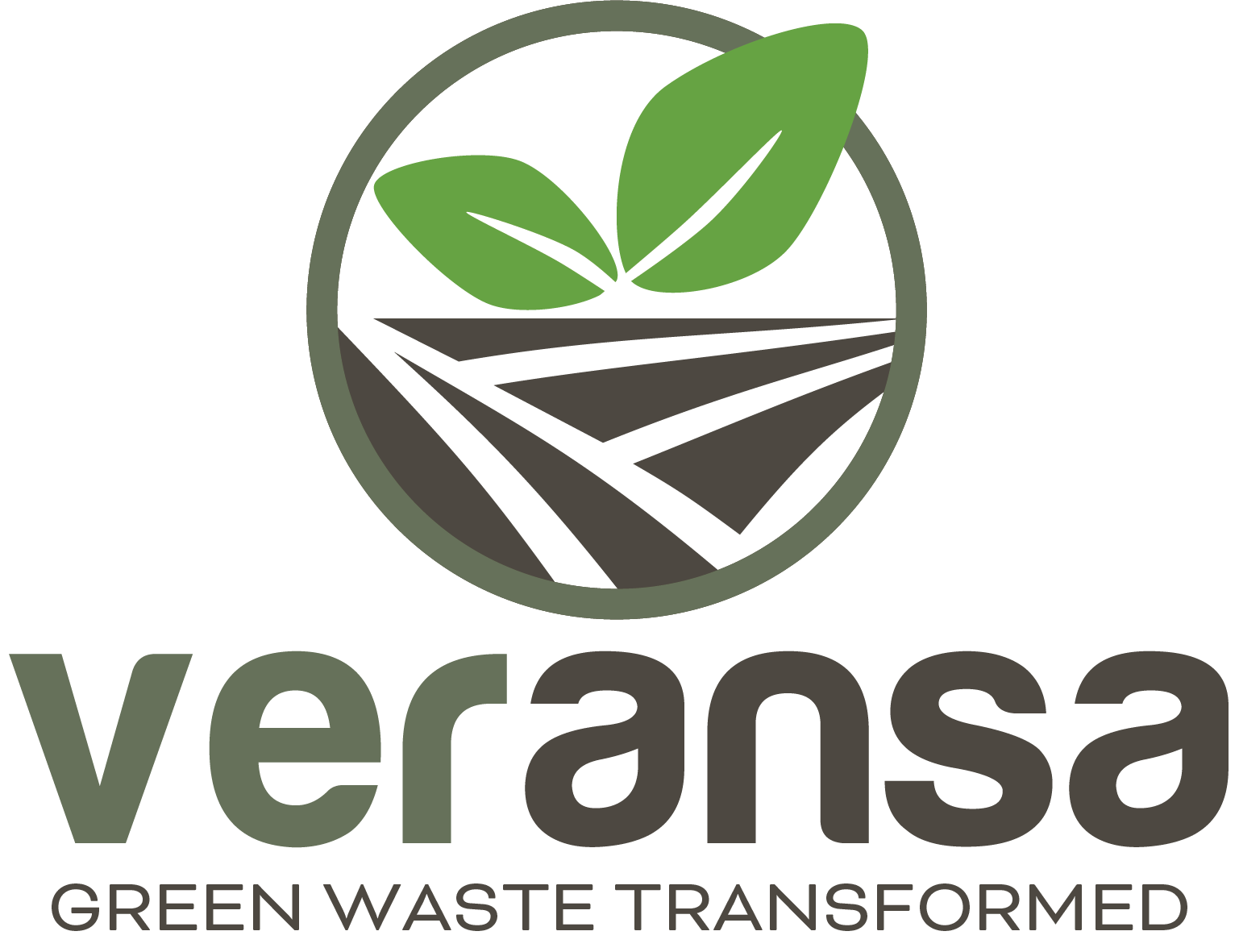We’ve enjoyed a beautiful spring so far without too much heat or humidity. So, if you haven’t yet prepared your trees and plantings, you still have time to mulch your beds and gardens. Mulch helps your plant beds retain moisture, minimize weeds, and keep plant roots safe from fluctuating soil temperatures. It can also help lower the potential for erosion and add beauty, color, and texture to your landscaping.
Did You Know? Mulch can be made from either organic or non-organic materials. Organic materials include shredded hardwoods, pine bark nuggets, or straw.
Mulch Your Yard with Organic Products
Although inorganic options are available, this article focuses on organic mulch. Organic mulch provides nutrients to the soil and is, therefore, environmentally sustainable and responsible. This type of mulch is ideal for those looking to grow their own plants, trees, and even food.
Plant Beds
In order to most efficiently mulch planting beds, you’ll need to first eliminate as many weeds as possible before application. Homeowners can pull weeds up by hand or remove them with a hand weeder or garden hoe. While chemicals and herbicides will do the job, they add elements to the soil that you are trying to avoid by utilizing organic products. Natural mulch and compost regenerate and restore soil, making it healthier. Chemicals may kill weeds or bugs and make things easier in the short term, but they contaminate your soil.
Once the weeds are gone, wait for your seeds to germinate or add more mature plantings to your beds. You can then install edging and add the mulch around the plants to protect roots and retain moisture from watering.
Trees
When mulching around trees (as opposed to when you mulch your beds), you will first determine the tree’s drip line. The drip line is where rainwater drips off the outermost edge of the longest tree branches. You can typically determine the drip line by observing the tree canopy and determining the point directly under the most extended branches. You’ll want the mulch to be applied to this line all around the tree, so you may want to measure and mark the circle with a rope or hose.
Just like when you mulch your beds, you’ll want to first eliminate all weeds before you apply mulch around the tree into the marked area. Once the mulch is placed, water the entire area.
Maintaining Your Mulch Beds
To ensure you’re optimizing your organic mulch and maintaining your lawn and beds:
- Keep debris off mulched areas
- Eliminate weeds as soon as possible to keep them from becoming established
- Turn mulch with a garden rake a couple of times during the year to improve air and water circulation, keep the mulch appearance fresh, and minimize the growth of mold and fungi
- Add a fresh layer of mulch as needed to maintain the right depth as the existing organic mulch decomposes over time
- Don’t let the mulch get too deep. If you need to brighten faded mulch, you can add a thin layer of fresh material
- If organic mulch has decomposed, it can be worked into the soil along with compost to add nutrients and improve the soil structure.
Insist on Quality Organic Mulch
If you care about the environment like we do, you’ll only want to use sustainable, organic products to mulch your beds and refresh your lawn and garden. Mulch products from the Veransa Group recycle yard and green waste and turn it into quality mulch and compost that will enrich your soil – not deplete its nutrients. To learn more about our process or purchase products, we invite you to browse our website.

